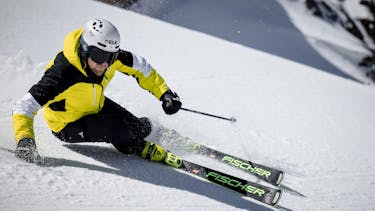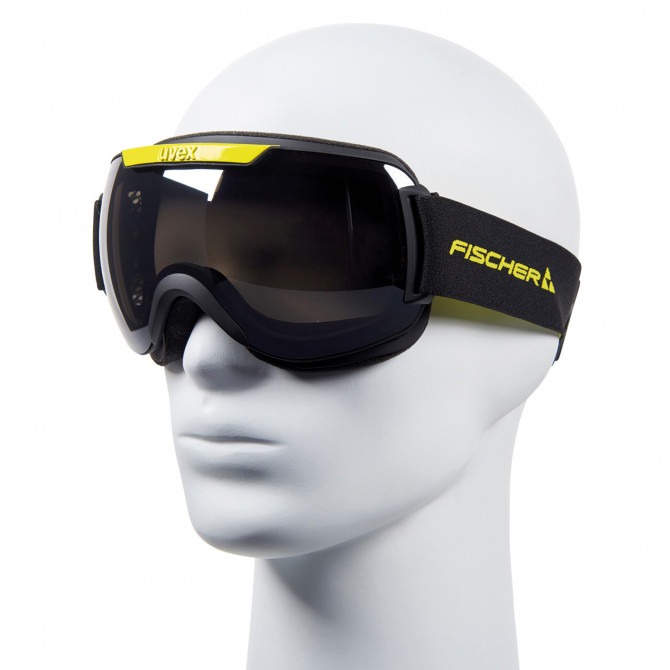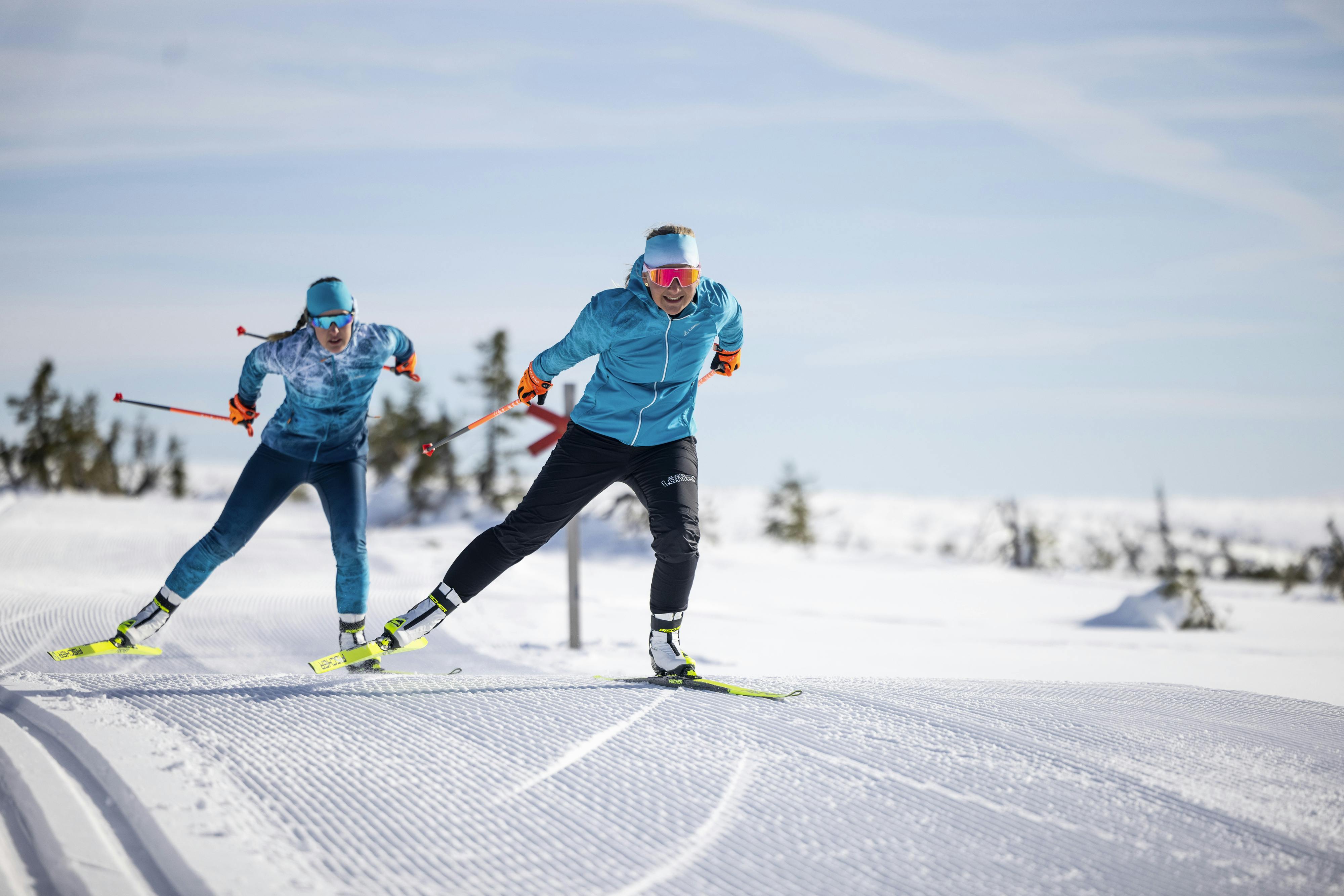Eye protection
Eye protection above and beyond eyeglasses or sunglasses is highly recommended. UV protection, including from the sides and from underneath, is extremely important on a sunny day with the increased effect of sunlight and UV rays reflected off the snow.
Falling snow can also become extremely uncomfortable and limiting with the increased force created by wind or a skier flying downhill.
Occasional skiers may opt to simply find a pair of basic goggles that accommodate their glasses with a fit that is decent, or because it’s not worth the investment to them.
A serious downside to this is that their peripheral vision can be extremely limited by two different lens frames in a very limited space. This can be particularly dangerous for a fast skier or if the ski slope is crowded.
Regular skiers of any level would be wise to invest in a high-quality version of one of the following options. With personal comfort, and performance in cold conditions, going the cheap route never pays off.
Three options for glasses wearers
- There are prescriptive lenses in frames that clip into the inside of ski goggles. You choose whatever goggles you like, then fit these afterward. These frames, with tension clips, will fit a variety of goggle shapes.
These are standard goggles, so there is a question if there is sufficient ventilation for the additional lenses, especially when you’re at rest- in line, in a restaurant, etc. - Goggles specifically designed to fit over glasses are know as OTG (over-the-glasses) goggles. These goggles also feature enhanced ventilation to prevent glasses from fogging up.
- Prescription glacier glasses: These are sunglasses offering maximum light, UV, and wind protection in all directions. The lenses have a soft gasket to seal them against the face, along with a protective frame element extending along the side of the glasses’ arms.
If you need regular updates to your lens specifications these can become prohibitively expensive. You may also find it to be too inconvenient to constantly need to swap glasses every time you read a map or enter a restaurant.
A key factor for any goggles is that they also fit your ski helmet. This is especially important to check when considering a specialized item like OTG goggles, so bring your helmet along to any test fitting.
In all case, polarized lenses are recommended for their ability to help the wearer discern irregularities on a bright surface, like a snowy slope. Be aware that polarized lenses affect your view of a typical smartphone camera image, so slip them off at photo time.

Fogged up lenses
There are a few tricks to clear your goggles from fogging up:
- There are lenses with an anti-fog treatment. Be aware that on cheaper ski goggles this treatment can eventually wash away and no longer be effective.
- There are anti-fog sprays. Consider a small container for your pack or pocket.
- Be sure the ventilation of your goggles isn’t covered by your helmet, hat, or headband so moist air can escape.
- Be sure a face mask or scarf doesn’t prevent a snug fit of your glasses to your cheeks, which allows your exhaled breath to rise up behind the lenses.

Kids with glasses
The same options for adult glasses wearers apply to kids, as well: goggles that fit over glasses, clip-in prescription glasses, or specialized prescription glacier glasses. There are high quality ski goggles just for kids. A snug fit is important, so do not put them in hand-me-down adult size goggles.
For all skiers, especially younger ones with more sensitive eyes, eye protection with sufficient UV protection is critical. “UV 400” is the highest rating for UV protection. Do not underestimate the powerful effect UV rays have, even on an overcast day!




